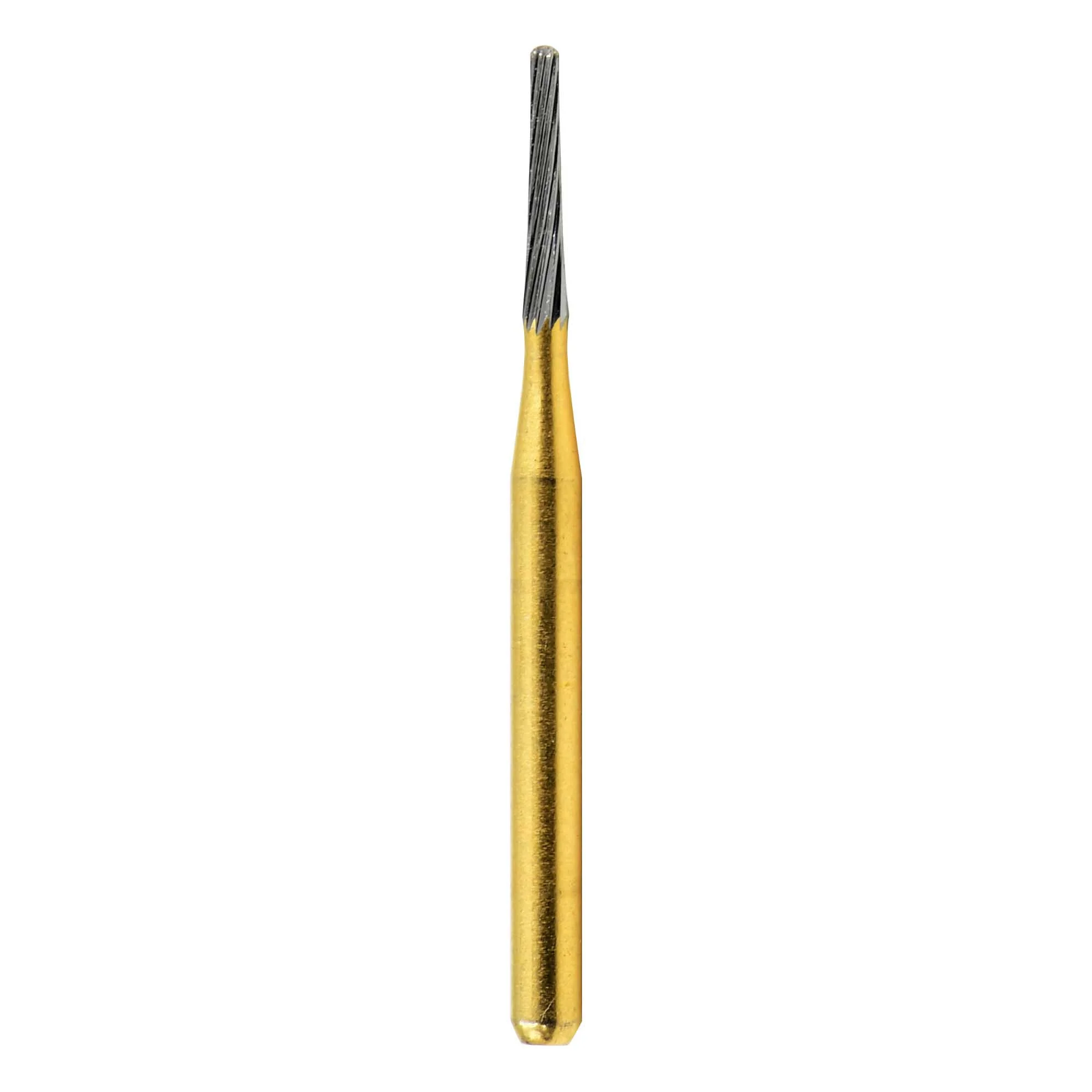Introduction to Dental Burs
● Definition of a Bur
A dental bur is a specialized instrument used by dentists for various procedures involving the cutting, grinding, and shaping of tooth structures and dental materials. These rotary tools are an essential part of modern dentistry, providing the precision and efficiency required to perform a range of dental procedures effectively.
● Importance in Dentistry
Dental burs are critical for the success of numerous dental treatments, from cavity preparation and crown removal to finishing and polishing restorations. Without these tools, many dental procedures would be less efficient and more time-consuming. Burs allow dentists to achieve the fine details necessary for successful dental work, contributing to better patient outcomes and overall oral health.
History of Dental Burs
● Evolution of Burs
The history of dental burs dates back to ancient times when primitive tools were used for dental procedures. However, significant advancements have been made over the centuries. Initially, dental burs were simple and often manually operated. With the advent of modern technology, burs have evolved into highly sophisticated instruments, incorporating advanced materials and designs to enhance their functionality.
● Historical Materials Used
Early dental burs were made from basic materials like flint and stone. Over time, metals such as steel became the standard, offering greater durability and effectiveness. In recent decades, the development of advanced materials like tungsten carbide and diamond has revolutionized the dental bur industry, providing exceptional cutting performance and longevity.
Types of Dental Burs
● Carbide Burs
Carbide burs are made from tungsten carbide, a material known for its hardness and durability. These burs are highly effective for cutting through hard materials like enamel and metal. They are commonly used in procedures such as cavity preparation and the removal of old restorations.
● Diamond Burs
Diamond burs feature a coating of diamond particles, making them extremely hard and efficient for tasks that require precise cutting and shaping. They are particularly useful for contouring and finishing composite materials and ceramic restorations.
● Ceramic Burs
Ceramic burs are made from advanced ceramic materials that offer a combination of sharpness and durability. These burs are often used for specific applications where other types of burs might not be suitable. They are known for their precision and are often used for fine finishing work.
Components of a Dental Bur
● Head
The head of a dental bur is the cutting or grinding part that comes into direct contact with the tooth or dental material. It is typically shaped and designed based on the intended use, such as drilling, cutting, or polishing.
● Neck
The neck connects the head to the shank and provides the necessary support and stability during use. It is designed to withstand the rotational forces generated during dental procedures, ensuring the bur operates smoothly.
● Shank
The shank is the part of the bur that fits into the dental handpiece. It is typically made from durable materials to ensure it remains securely attached during use. The shank also serves as a conduit for transmitting rotational energy from the handpiece to the bur head.
Classification of Dental Burs
● By Shape
Dental burs come in various shapes, each designed for specific tasks. Common shapes include round, pear, cylindrical, and flame. Each shape has unique characteristics that make it suitable for particular procedures, such as cavity preparation, crown removal, or polishing.
● By Grit Size
Burs can also be classified by their grit size, which refers to the coarseness of the cutting surface. Coarse burs are used for rapid material removal, while fine burs are used for detailed finishing and polishing. The choice of grit size depends on the specific requirements of the procedure.
Applications in Dental Procedures
● Cavity Preparation
Dental burs are widely used in cavity preparation, where they help remove decayed tooth material and shape the cavity for a filling. The precision and efficiency of burs make them ideal for creating the clean, well-defined margins necessary for successful restorations.
● Crown Removal
Burs are also essential for removing old crowns and other dental restorations. The cutting power of carbide and diamond burs allows dentists to carefully and efficiently remove these materials without damaging the underlying tooth structure.
● Polishing and Finishing
After a dental restoration, burs are used to polish and finish the surface, ensuring a smooth and aesthetically pleasing result. Fine grit burs are particularly useful for this purpose, providing the level of detail required for high-quality dental work.
Materials and Manufacturing
● Common Materials
The most common materials used in the manufacturing of dental burs are tungsten carbide, diamond, and ceramic. Each material offers unique advantages, such as the hardness and durability of tungsten carbide, the precision cutting ability of diamond, and the sharpness of ceramic.
● Manufacturing Process
The manufacturing process for dental burs involves several steps, including sintering, electroplating, and precision grinding. Advanced techniques such as 5-axis CNC grinding technology are often used to ensure the burs meet stringent quality standards. This process results in burs that are both durable and effective for their intended applications.
Selection Criteria for Dental Burs
● Procedure Type
The type of procedure being performed is a key factor in selecting the appropriate dental bur. Different burs are designed for specific tasks, such as cutting, drilling, or polishing, and choosing the right bur ensures optimal results.
● Tooth Material
The material of the tooth or restoration being worked on also influences the choice of bur. Harder materials like enamel and metal require more robust burs, such as carbide or diamond, while softer materials may be adequately handled with ceramic burs.
● Dentist's Preference
Dentists often have personal preferences based on their experience and familiarity with certain types of burs. These preferences can also impact the selection process, as dentists choose burs that they find reliable and effective for their specific needs.
Maintenance and Sterilization
● Cleaning Methods
Proper cleaning of dental burs is essential to maintain their performance and longevity. Cleaning methods typically involve the use of ultrasonic cleaners and specialized brushes to remove debris and contaminants from the bur's surface.
● Sterilization Techniques
Sterilization is crucial for preventing cross-contamination and ensuring patient safety. Common sterilization techniques include autoclaving, which uses high-pressure steam, and chemical sterilization methods. Proper sterilization protocols help maintain the integrity of the burs and ensure they are safe for use in subsequent procedures.
● Importance of Maintenance
Regular maintenance of dental burs is vital for ensuring their continued effectiveness. This includes routine inspection for wear and damage, proper cleaning and sterilization, and timely replacement of worn-out burs. Proper maintenance practices contribute to better performance and longer lifespan of the burs.
Future Trends in Dental Burs
● Technological Advancements
The field of dental burs is continually evolving, with new technological advancements improving their performance and functionality. Innovations such as computer-aided design and manufacturing (CAD/CAM) and advanced coating materials are leading to more precise and durable burs.
● Material Innovations
New materials are being developed to enhance the properties of dental burs. These innovations aim to provide greater cutting efficiency, longer lifespan, and improved patient comfort. Advanced ceramics and hybrid materials are among the emerging trends in this area.
● Environmental Considerations
Environmental sustainability is becoming increasingly important in the manufacturing of dental burs. Efforts are being made to develop eco-friendly materials and manufacturing processes that reduce environmental impact. This includes recycling programs and the use of biodegradable materials.
About Boyue
Jiaxing Boyue Medical Equipment Co., Ltd. is a leading manufacturer that has mastered 5-axis CNC precision grinding technology. Specializing in the production of medical rotary cutting tools, Boyue offers a full series of dental burs, dental files, bone drills, and other surgical tools. With a commitment to quality and innovation, Boyue provides reliable and cost-effective dental products for the global market. Precision and reliability are the company’s hallmarks, ensuring superior dental burs and files for various applications.

Post time: 2024-06-30 15:09:04


